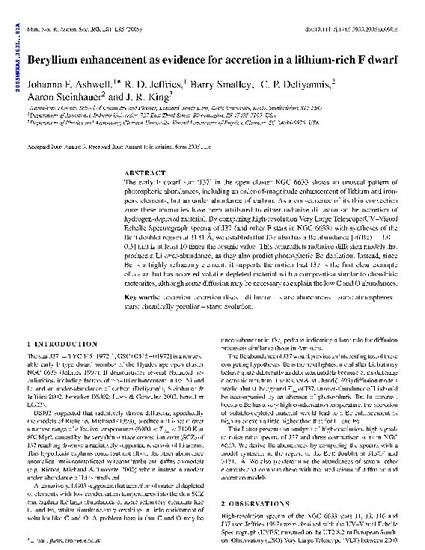
The early F dwarf star ``J37'' in the open cluster NGC6633 shows an unusual pattern of photospheric abundances, including an order of magnitude enhancement of lithium and iron-peak elements, but an under-abundance of carbon. As a consequence of its thin convection zone these anomalies have been attributed to either radiative diffusion or the accretion of hydrogen-depleted material. By comparing high resolution VLT/UVES spectra of J37 (and other F stars in NGC 6633) with syntheses of the Be ii doublet region at 3131 Ang, we establish that J37 also has a Be abundance (A(Be)=3.0+/-0.5) that is at least ten times the cosmic value. This contradicts radiative diffusion models that produce a Li over-abundance, as they also predict photospheric Be depletion. Instead, since Be is a highly refractory element, it supports the notion that J37 is the first clear example of a star that has accreted volatile-depleted material with a composition similar to chondritic meteorites, although some diffusion may be necessary to explain the low C and O abundances.

Published version found here (please note a subscription is required to view this version): http://onlinelibrary.wiley.com/journal/10.1111/%28ISSN%291365-2966